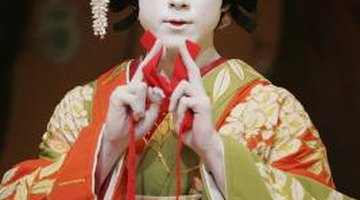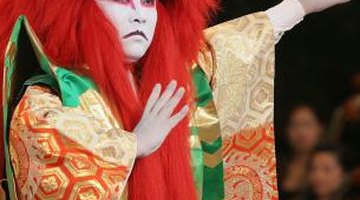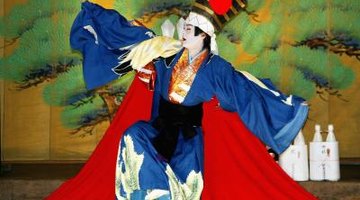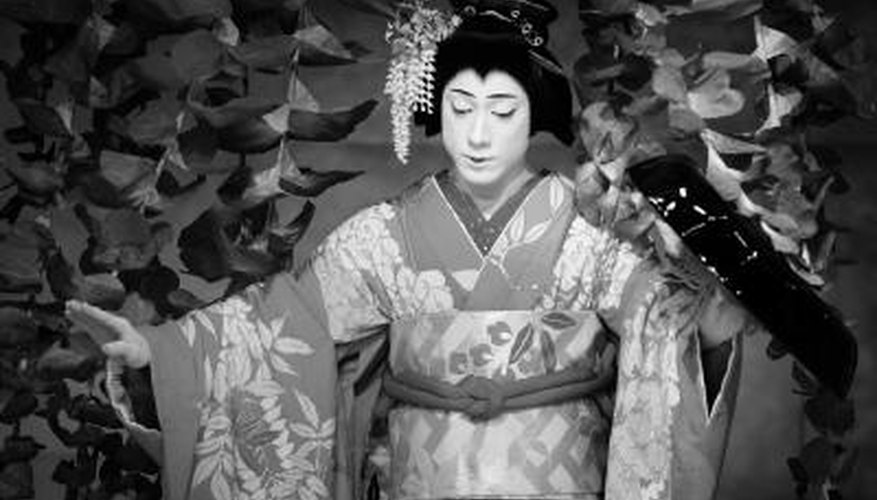Japanese theatre has three major forms: Noh, Kyogen and kabuki. While Noh and Kyogen actors use stylised masks to give the audience information about their characters, kabuki performers paint their faces instead. Along with the brightly coloured costumes, kabuki make-up is iconic of the art form and shows the audience who each character is from the moment he enters the stage.
Kesho

Kabuki actors do not wear masks, but rather, most of them paint their faces in a style called "kesho." First, a performer applies a thick layer of white make-up made of rice powder over his entire face, using different shades depending on the age, social status and gender of his character. He then outlines his eyes and mouth in black or red, using different shapes and styles to represent a male or female character.
Kumadori

Actors who are playing spirits, demons or other supernatural characters use a different style of face painting, called kumadori. Kumadori begins with the same layer of white, but the facial features drawn over it are much more complex and colourful. In addition to the eyes and mouth, the actor also outlines his cheekbones and jaw, using styles that represent the character's predominant emotions. Each character has a particular pattern that represents him, totalling over 100 distinct kumadori designs in use.
- Actors who are playing spirits, demons or other supernatural characters use a different style of face painting, called kumadori.
- Kumadori begins with the same layer of white, but the facial features drawn over it are much more complex and colourful.
Positive Colors

Kumadori designs are colour-coded, with each colour representing different personality traits or emotions; the audience uses the face paint to identify each character as he enters and to immediately recognise his emotional state. The colours used to represent good characters and positive emotions are red, for passion and enthusiasm; pink, for youthful joy; light blue, for an even temper; pale green, for peacefulness; and purple, for nobility or elevation of spirit. Pink and purple are used rarely and only for a few particular characters.
Negative Colors

As kumadori is used for villains and demons, the colours representing bad character traits or negative emotions are used frequently. Indigo represents depression; brown, self-centeredness or egotism; grey, applied to the chin, melancholy; black, fear; and deep red, anger, stubbornness, and cruelty. Deep red is the most common kumadori colour, and it can be used for characters who have both positive and negative traits. Next in frequency is indigo, which is often used by actors playing ghosts.
- As kumadori is used for villains and demons, the colours representing bad character traits or negative emotions are used frequently.
- Deep red is the most common kumadori colour, and it can be used for characters who have both positive and negative traits.
